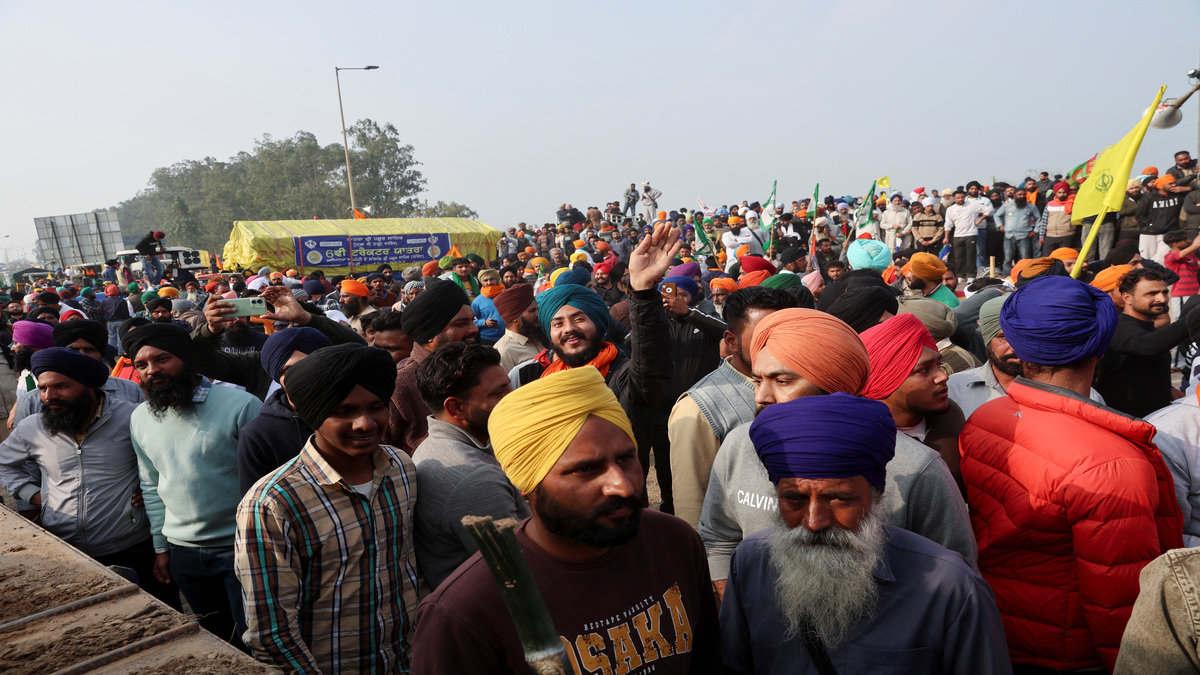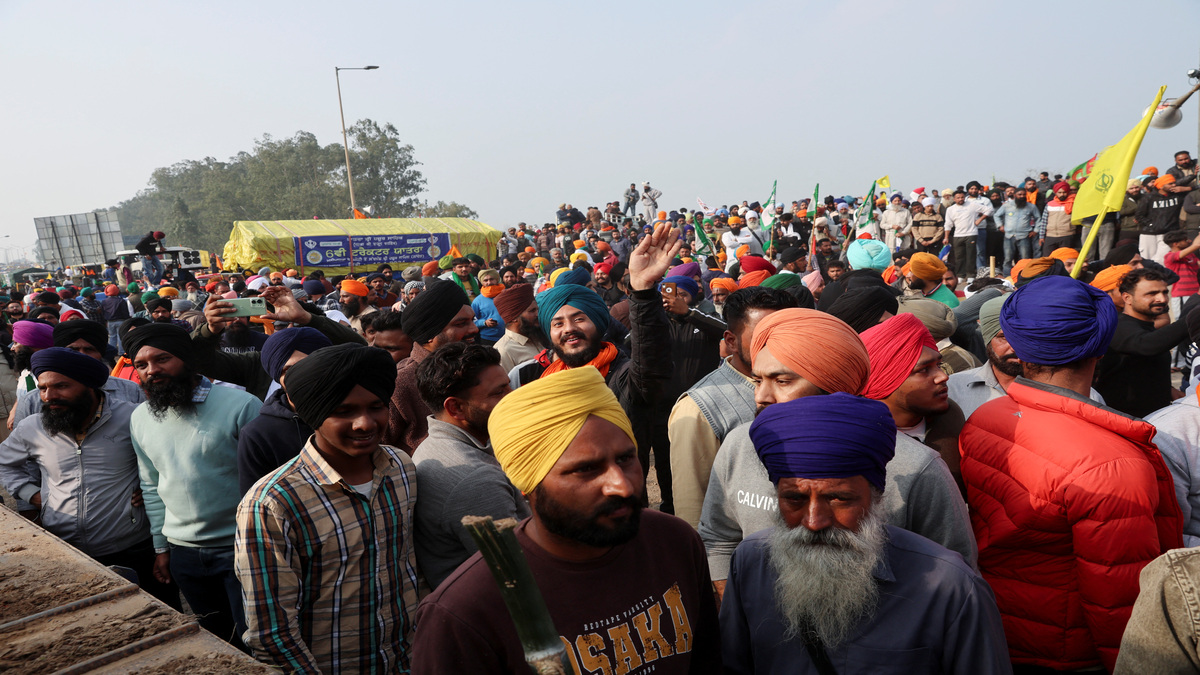Talk about getting boomeranged. Uttar Pradesh chief minister Yogi Adityanath’s propensity to play the religious card is known, but this time, it seems to have turned back on him. Caste groups from across the spectrum—backwards and Dalits to Brahmins—have vehemently rejected the Yogi’s election rally description of Hindu deity Hanuman as “a forest-dweller,” from a “deprived” background and yes, a “Dalit”.
Adityanath may have been drawn into making the comparison based on the commonplace understanding and visualisation of Hanuman as an ardent devotee of Lord Rama, who he faithfully serves during the latter’s exile.
In ascribing a Dalit identity to a prominent deity, the Bharatiya Janata Party leader has tried to extract Hanuman from the sacred sphere by placing him in the worldly realm inhabited by jatis (castes) and janjatis (tribes). He has also ignored an important aspect of the Dalit-Bahujan identity that is structured around a specific and independent form of worship. Dalits see Adityanath’s statement as an attempt to assimilate them into the Hindu fold and have straightway expressed their resentment.
Sadhvi Savitribai Phule, the young redoubtable Member of Parliament from Bahraich, resigned from the BJP on Thursday, after publicly voicing her objection to Hanuman being called a Dalit. She contended that Hanuman, monkey-faced and long-tailed, is more animal-like than god-like, and argued that this why he is being called a Dalit. “Why can they not consider Dalits as humans?” she said.
Phule isn’t the only one to have raised this concern. Another BJP ally in Uttar Pradesh, Om Prakash Rajbhar, a minister in Adityanath’s cabinet and president of the Suheldev Bharatiya Samaj Party (SPSP), is a strong critic of BJP’s affiliates’ Hindutva line. He said, “Why has the chief minister not said that Rama is Dalit or Shiva and Vishnu are Dalits? Why is only Hanuman being called a Dalit?” Rajbhar’s SBSP counts the backward Rajbhar community as its primary political base.
Seen thus, Yogi’s assertion of Hanuman as a Dalit emphasises the patron-client relationship that exists between Hanuman and Lord Rama in the Ramayana. For example, in the same epic, the devotion of Lakshmana, Rama’s brother, is qualitatively different from Hanuman’s devotion to Rama. Hanuman surrenders before Rama, and is invariably portrayed on a bended knee before the avatar of Vishnu. Lakshmana is Rama’s loving younger brother, obedient but not subservient, and is accordingly portrayed as a near-equal. To members of non-elite castes, the difference is significant.
It can be argued that Yogi nudged Hanuman into the Dalit fold believing it would assuage the latter’s angst over being denied access to places of worship by the elite castes. But quite to the contrary, his grant of the Dalit-status to Hanuman has not been read by Dalits as a signal that he is willing to liberalise worship traditions. “Dalits have rebelled against the formulation that Hanuman is one of them,” says Prof Badri Narayan, social historian and cultural anthropologist at the GB Pant Social Science Institute, Allahabad.
Chandrashekhar, a Dalit leader from Uttar Pradesh, has mobilised his Dalit Army to demand the right to conduct prayers in Hanuman temples. Bhim Army leader Bhagat Singh says: “People are educated today and seek school and colleges, not new Dalit gods.” At a Hanuman temple in Agra, aided by Congress party workers, Dalits took over prayers briefly. In Lucknow, Dalits led a similar agitation. “We accompanied Dalit activists to two temples where they insisted on leading prayers,” says Agra Congress member Ashwani Jain. There was no restriction on worshippers at these temples but people went there because the priest is inevitably always a Brahmin. “Obviously,” Jain says: “Brahmins are upset by Yogi’s remark and the reactions to it.”
“By saying they will conduct prayers they are challenging Yogi’s assertion of Hanuman being a Dalit. They’re making it clear that they see through his ploy to assimilate them into the Hindutva worldview,” says Narayan.
The signal has gone out that by giving Hanuman a subaltern identity BJP wants to assimilate or “Hinduise” Dalits but at the same time reinforce their “subordinate” position. This is based on the interpretation that Hanuman was, in the Ramayana, a collaborator of the Kshatriya hero, Lord Rama. “Now that the Ram temple issue is heating up again they want the Dalits as foot-soldiers. That’s why Hanuman is being made a Dalit,” says Dr Sanjay Nishad, who heads the Nirbal Indian Shoshit Hamara Aam Dal or NISHAD, a party that represents the backward castes.
In his book Fascinating Hindutva, Saffron Politics and Dalit Mobilisation, Narayan documents the RSS-BJP efforts to subsume Dalit-Bahujan identity within the Hindu fold by using the symbolic value of Lord Rama. For example, Narayan notes how Savari, a minor character in the Ramayana, was used to rally around the Musahar caste members by declaring her a Musahar. Similarly Guhya, a Nishad king who helped Rama cross a river in Ramayana, was attempted to be projected as an icon for the modern-day Nishad and Mallaha caste members. “It can thus be said that the local myths and heroes (of Dalits) are being ‘Rama-ised’ by the BJP and the nationalist discourse of Hindutva politics is being shifted to the local level.”
Narayan traces the sharp fall in the BJP’s electoral tally (from 88 seats in 1996 to 51 seats in 2002) to their incomplete project of Dalit assimilation using the Lord Rama symbol. In caste-ridden Uttar Pradesh, assimilation poses continuous challenges to all parties. Hanuman can prove to be an outstanding feature for the BJP because of his popularity and because, giving him a Dalit identity accords him a pan-national character. This is because Dalits are not a specific caste group but a varga, or a class, an agglomeration of the downtrodden identities across India.
Both BJP and Bahujan Samaj Party, its rival in Uttar Pradesh, mobilise Dalits for politics, using different strategies. While the BJP tries to subsume Dalits within Hinduism, BSP abandoned a pugnacious anti-Brahmin approach to blend the elite and backward castes with the Dalits.
In this continuous battle, Hanuman is just another icon. Yogi may have expected his statement to operate at a purely symbolic level. However, the moment he jerry-rigged a god to a modern identity, even the Vishwa Hindu Parishad’s youth wing “Bajrang Dal”, incidentally named after Hanuman, expressed consternation. “Dalits didn’t go to temples in Agra to replace priests but to resolve a property dispute,” argues Pramendra Jain, the Agra VHP spokesperson. Yet, he feels “Maharaj-ji”—Yogi Adityanath— “shouldn’t have talked about caste. People’s faith is being exploited for political gains.”
“Some think Rama is human and Ganga just a river. For such people, Hanuman is a monkey. This is the mindset of people who’re calling Hanuman a tribal or Dalit,” says Vishambhar Nath Mishra, mahant of Sankat Mochan temple in Varanasi, a prominent temple dedicated to Hanuman. “It has nowhere been said (scripturally) that there are ‘upper’ and ‘lower’ castes. We have created these distinctions as well,” Mishra says.
Citing 16th century Bhakti poet Goswami Tulsidas’ Ramcharitmanas, Mishra says: “Hanuman can make the unexpected happen and prevent the seemingly inevitable from occurring—aghatit ghatan sughat vighatan aisi birudali nahi aan ki… Given how little they know of Hanuman, their tadka (flavour) of caste could make them losers, not winners.”
Note: A previous version of this article erroneously attributed the quote by Agra VHP spokesperson Pramendra Jain to Vinod Bansal. The mistake his been corrected.


)




)
)
)
)
)
)
)
)